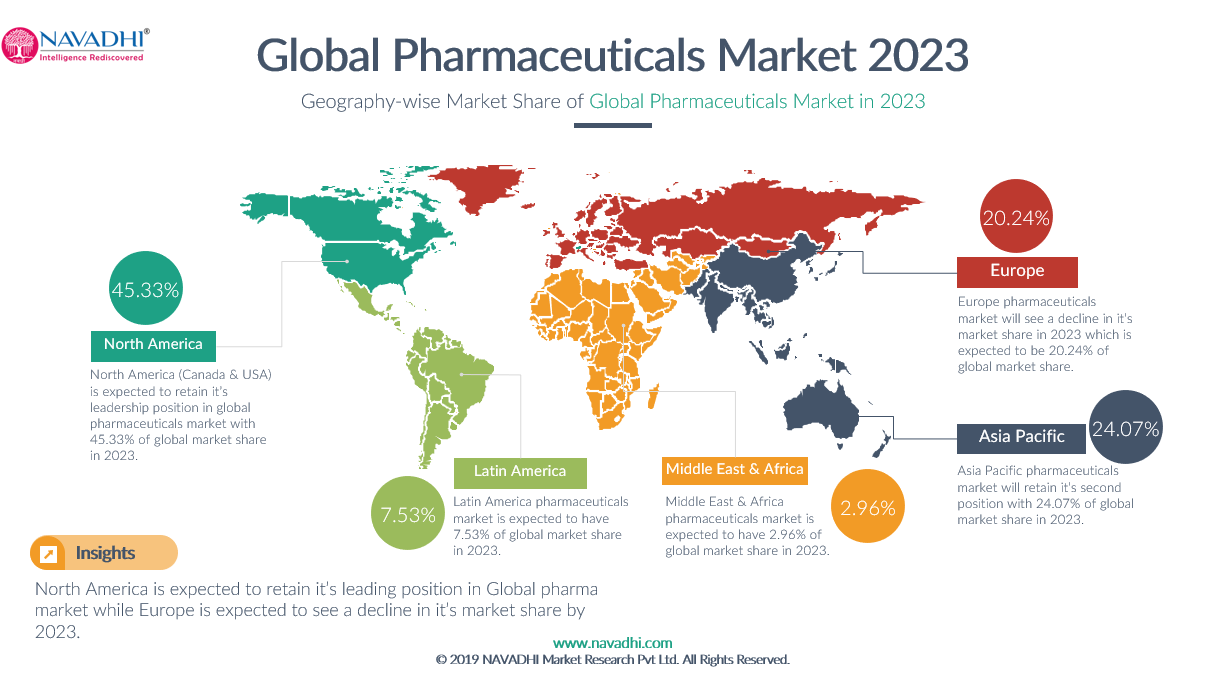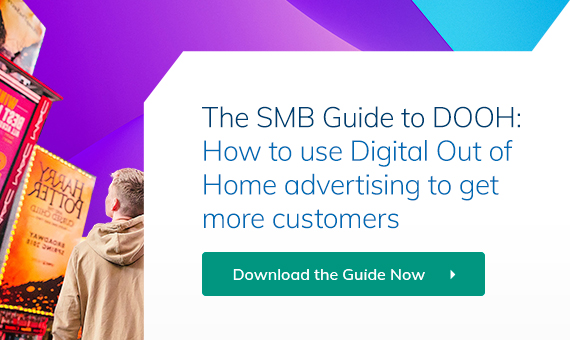Pharmaceutical advertising is a multi-billion-dollar industry.
With the growing need to reach a more targeted audience, pharmaceutical companies are increasingly turning to Digital Out of Home (DOOH) advertising as a way to promote their products.
DOOH advertising provides a unique opportunity to reach healthcare professionals and consumers in a physical location. However, to optimize the effectiveness of these ads, pharma companies need to make data a central part of their advertising strategy.
The pharmaceuticals market is projected to reach USD 1,163.00 billion in 2023. The market’s largest segment is oncology drugs with a projected market volume of USD 202.30 billion in 2023. Revenue is expected to show an annual growth rate (CAGR 2023-2027) of 5.39%, resulting in a market volume of US$1,435.00bn by 2027.
North America is expected to retain its leading position in the global pharmaceuticals market with market share of 45.33% in 2023, improving on its market share compared to 2017.
Europe on the contrary is expected to see a decline in its market share compared to 2017 and be worth 20.24% of global pharma industry in 2023.
Asia Pacific pharmaceuticals market is expected to retain its second position with a market share of 24.07% in 2023.
Latin America and Middle East and Africa (MEA) are expected to retain 7.53% and 2.96% market share of global pharmaceuticals market in 2023.

(Image source: navadhi.com)
The Role of Data in Pharma Advertising
Data is a critical tool for pharmaceutical companies looking to optimize their advertising efforts.
By using data to understand the behavior of healthcare professionals and consumers, pharma companies can create targeted ads that resonate with their audience. Data can help pharma companies identify the best locations to display their ads, the most effective messaging, and the optimal time of day to display their ads.
With DOOH advertising, pharma companies can use real-time data to modify their ad strategy and ensure their ads are being seen by the right people at the right time.
One of the key advantages of DOOH advertising for pharma companies is the ability to target healthcare professionals directly.
Healthcare professionals are a critical audience for pharmaceutical companies, as they have the power to prescribe medications to patients. DOOH advertising allows pharma companies to reach healthcare professionals in their workplace, where they are more likely to be receptive to the message.
By using data to identify the most effective locations to display their ads, pharma companies can increase the chances of their products being prescribed and ultimately, sold.
Data can also be used to optimize consumer ads.
With the rising concern over prescription drug prices, consumers are more likely to research their medication options before making a purchase. By using data to understand the search habits and preferences of consumers, pharma companies can create targeted ads that appeal to the needs of individual patients.
For example, if data shows that a particular demographic is more likely to search for a medication by its brand name, pharma companies can create ads that highlight the brand name of their product.
Let’s say a pharmaceutical company is advertising a new allergy medication on a DOOH billboard in a busy city center. By using data from sources such as social media, search engines and mobile apps, the company can gather insights on the demographics, interests and behaviors of people in the area.
With this information, the pharma company can tailor their DOOH ad to appeal specifically to those who are most likely to be interested in the allergy medication. They can use language and imagery that resonates with this audience, and even display different ads at different times of day, depending on the likely presence of their target audience.

(Image source: mmm-online.com)
Pharma companies also need to be aware of the regulatory environment surrounding their advertising efforts.
Direct-to-consumer (DTC) advertising is subject to strict regulations, including requirements for disclosures about the risks and benefits of the medication. Data can help pharma companies ensure that their ads comply with these regulations by providing insights into how consumers are interpreting the messaging.
The Benefits of DOOH Advertising for Pharma Companies
DOOH advertising provides several benefits for pharma companies. First, DOOH advertising allows pharma companies to reach their target audience in physical locations like hospitals and doctor’s offices. This means that pharma companies can reach healthcare professionals and patients at a time when they are most likely to be receptive to the message.
Secondly, DOOH advertising is highly customizable. With DOOH advertising, pharma companies can create ads that are tailored to specific locations, times of day and audiences. This means that pharma companies can create targeted ads that are more likely to resonate with their audience.
Next, DOOH advertising is measurable. Pharma companies can use data to measure the effectiveness of their ads and make changes in real-time. This means that pharma companies can optimize their ad strategy to ensure that their ads are being seen by the right people at the right time. By analyzing data on ad impressions, clicks and conversions, they can see which ads are resonating with their target audience and adjust their campaigns accordingly.
Finally, DOOH advertising provides a unique opportunity to promote products in a way that is compliant with regulations. Unlike DTC advertising, DOOH advertising can be used to promote products in a way that is compliant with regulatory requirements.

(Image source: ipglab.com)
Challenges Facing Pharma Companies in DOOH Advertising
While DOOH advertising provides several benefits for pharma companies, there are also some challenges to be aware of.
One of the biggest challenges facing pharma companies is the need to balance the promotion of their products with the need to provide accurate and value-led information. Pharma companies need to ensure that their ads are informative and provide accurate information about the benefits and risks of their products, while also being engaging and persuasive enough to convince healthcare professionals and consumers to consider their products.
Another challenge facing pharma in DOOH advertising is the need to comply with regulations. Regulations around pharmaceutical advertising are complex and vary by country and region. Pharma companies need to be aware of these regulations and ensure that their ads comply to avoid potential fines or legal action.
Additionally, pharma companies need to be aware of the potential for negative reactions to their ads.
Healthcare professionals and consumers may be skeptical of pharmaceutical advertising and may view it as biased or self-serving. Pharma companies need to be aware of these concerns and ensure that their ads are transparent and honest about the benefits and risks of their products.
DOOH advertising provides a unique opportunity for pharma companies to promote their products in a way that is targeted, measurable and compliant with regulations.
By using data to understand the behavior and preferences of their audience, pharma companies can create targeted ads that are more likely to resonate with their audience.
However, pharma companies should also be aware of the regulatory environment and the potential for negative reactions to their ads. By balancing the promotion of their products with the provision of accurate and helpful information, pharma companies can create effective DOOH advertising campaigns that both drive sales and help to improve patient outcomes.

(Image source: hightidecreative.com)
Get Started with Programmatic DOOH Today
With The Neuron, your campaigns can be created and run via single-click processes on a dashboard that’s easy to use and navigate. You can then use the platform to track your campaign and view in-depth analytics so you can adjust and optimize in real-time.
It couldn’t be easier to get started with programmatic DOOH. Start now!


